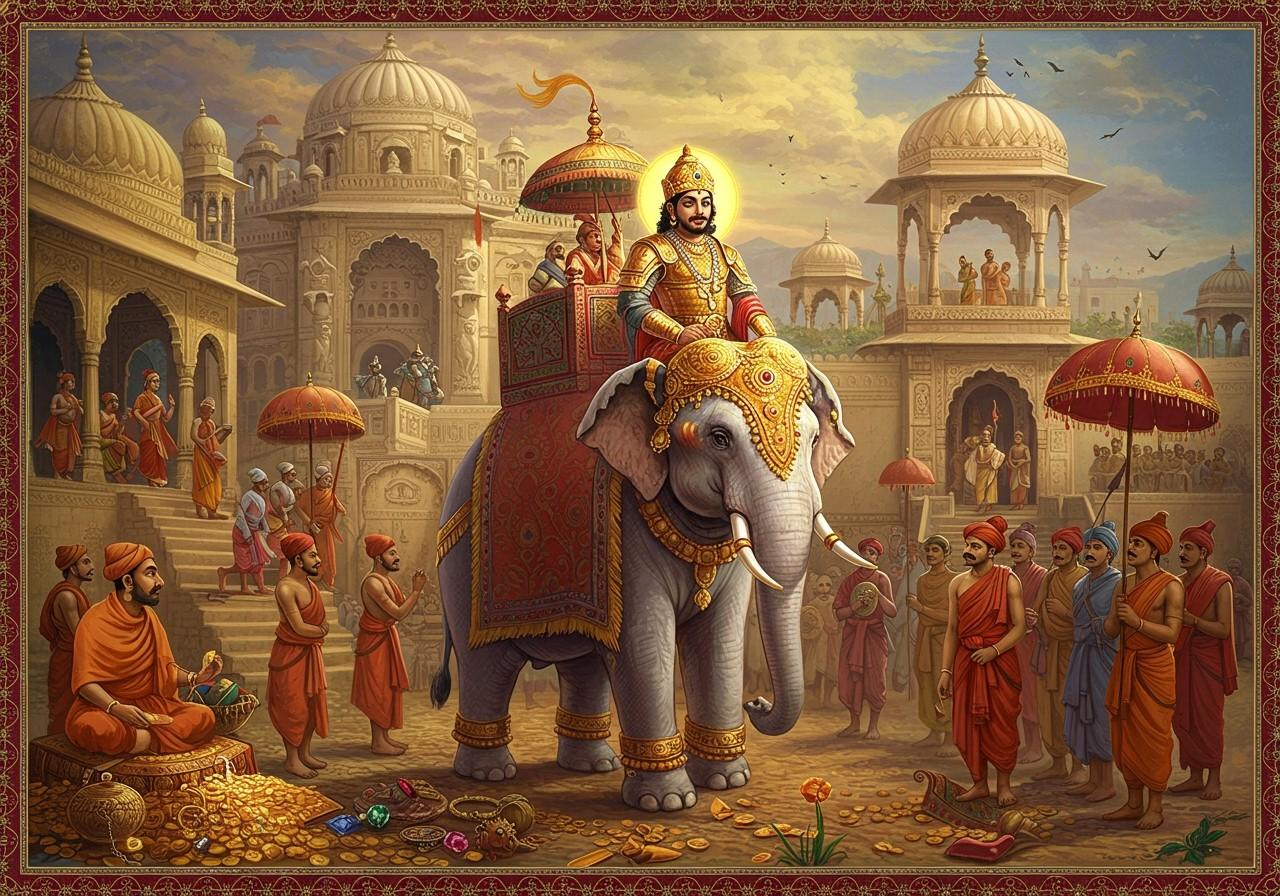
The Vardhana Dynasty, also known as the Pushyabhuti Dynasty, significantly shaped ancient India’s history. This article delves into the dynasty’s ascent, prominent rulers, and eventual decline, exploring the socio-political context, contributions to art and culture, and lasting impact on the Indian subcontinent.
Origins and Rise of the Vardhana Dynasty
The Vardhana Dynasty emerged in Northern India amidst political instability. Prabhakaravardhana, the dynasty’s founder (circa late 6th century CE), solidified its foundation through strategic alliances and military triumphs. He expanded the kingdom’s reach and implemented vital administrative reforms. This era witnessed cultural and economic progress, with Kannauj evolving into a prominent capital.
- Geopolitical Conditions: Northern India’s fragmented political landscape provided opportunities for the Vardhana Dynasty’s rapid expansion. Various smaller kingdoms vied for power, creating a setting ripe for consolidation under a strong leadership like Prabhakaravardhana’s.
- Prabhakaravardhana’s Influence: He fortified the kingdom through strategic conquests and shrewd political maneuvering. His administrative reforms laid the groundwork for a more centralized and efficient governance system, further strengthening the nascent dynasty.
- Kannauj as a Strategic Center: Kannauj served as a vital hub for administration, trade, and cultural exchange. Its central location facilitated control over the expanding territories and fostered economic growth.
Key Rulers of the Vardhana Dynasty
Several rulers shaped the Vardhana Dynasty’s trajectory. Prabhakaravardhana established the foundation, while his son, Harshavardhana (606-647 CE), stands as the most renowned ruler. Harsha amplified the empire through military campaigns and championed art, literature, and Buddhism. He maintained stability through robust administrative structures and fostered diplomatic ties with neighboring kingdoms.
- Prabhakaravardhana’s Legacy: His achievements in laying the dynasty’s groundwork proved crucial for its future success. His military prowess and administrative acumen set the stage for his successors to build upon.
- Harshavardhana’s Reign: Known for his military expansions, cultural patronage, and commitment to Buddhism, Harsha’s reign represents the Vardhana Dynasty’s pinnacle. He is celebrated for his just rule and intellectual pursuits.
- Effective Administration: Harsha implemented an efficient administrative system that ensured stability and facilitated the empire’s smooth functioning. This involved a network of officials and local rulers who reported to the central authority.
- Diplomatic Relations: Harsha maintained diplomatic relations with other kingdoms, including China, which fostered cultural exchange and peaceful coexistence. These alliances further strengthened the Vardhana Dynasty’s position in the region.
Harshavardhana’s Empire (606-647 CE)
Harshavardhana’s rule marked the Vardhana Empire’s zenith. His governance model incorporated local chieftains and provincial administrators. The empire experienced economic prosperity and established robust trade networks. Cultural advancements in literature, art, and architecture thrived. Harsha advocated religious tolerance and implemented public welfare initiatives.
- Geographic Extent: Harsha’s empire, at its peak, stretched across northern India, reaching the Narmada River in central India. It encompassed a vast and diverse territory, demonstrating the dynasty’s power and influence.
- Economic Prosperity: Well-established trade routes and a flourishing internal economy fueled the empire’s wealth. Harsha’s policies encouraged commerce and contributed to overall prosperity.
- Cultural Flourishing: Literature, art, and architecture blossomed during Harsha’s reign. He himself was a playwright, and his court became a center for intellectual and artistic activity.
- Religious Tolerance: Despite being a Buddhist convert in a predominantly Hindu era, Harsha promoted religious tolerance and supported various faiths. This fostered a climate of peaceful coexistence and intellectual exchange.
- Public Welfare Initiatives: Harsha implemented programs aimed at improving the lives of his subjects. These initiatives included the construction of hospitals, rest houses, and wells, demonstrating his commitment to public welfare.
Decline and Fall of the Vardhana Dynasty
The Vardhana Dynasty’s decline stemmed from various factors. Internal conflicts and succession disputes undermined central authority. External threats from neighboring kingdoms and invasions further strained the dynasty. Administrative complexities and economic downturns contributed to its downfall. The inability to maintain effective control over distant territories led to a gradual disintegration.
Following Harshavardhana’s death in 647 CE, the Vardhana Dynasty came to an end. The lack of a clear successor and the ensuing power vacuum led to the empire’s fragmentation. This marked a transition from centralized rule to a period of decentralized regional kingdoms in India.
Legacy of the Vardhana Dynasty
Despite its decline, the Vardhana Dynasty left an enduring cultural legacy. The dynasty’s contributions to art, literature, and architecture influenced subsequent generations. Historical texts and records from this era preserve its significance. The Vardhana period remains crucial for understanding India’s transition from ancient to medieval times.
Honoring the Vardhana Dynasty’s Legacy with Sacred Rituals
The Vardhana Dynasty’s rich spiritual heritage continues to inspire many today. At Poojn.in, we offer a variety of items to help you perform rituals that connect you with this significant era of Indian history:
- For Scholarly Pursuits: Honor King Harsha’s legacy of learning with pure copper and brass study lamps, Saraswati puja items, and traditional writing implements.
- For Buddhist Practices: Celebrate the Buddhist influences during the Vardhana period with authentic Buddha statues, meditation cushions and accessories, and pure copper water vessels for offerings.
- For Vedic Rituals: Perform traditional Vedic rituals with complete puja thalis, pure ghee diya sets, and premium quality incense and dhoop.
Visit www.poojn.in for our complete selection or consult our experts for personalized guidance.
Conclusion
The Vardhana Dynasty played a pivotal role in shaping India’s history. From its inception under Prabhakaravardhana to the apex of Harshavardhana’s reign (606-647 CE), the dynasty witnessed remarkable political, cultural, and economic progress. Although it ultimately met its demise, the Vardhana Dynasty’s influence on Indian art, literature, and architecture endures. Comprehending this period provides valuable insights into India’s complex transition from ancient to medieval times. The dynasty’s achievements and contributions stand as a testament to the enduring power of strategic leadership and cultural patronage.


